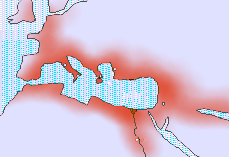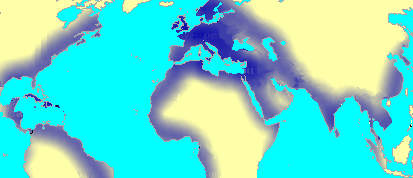400b.c. - 40b.c. - 1600a.d - 2000a.d
The ART of Memory follows the Civilization
![]() Three
reports of this traditional Art -
Simonides,
Cicero, G.Bruno
- each one at the renaissance moment
of the three historical sequences
(Athens,
Rome,
Europe) of our
present civilization - indicate how it is there, a primordial
structure.
Three
reports of this traditional Art -
Simonides,
Cicero, G.Bruno
- each one at the renaissance moment
of the three historical sequences
(Athens,
Rome,
Europe) of our
present civilization - indicate how it is there, a primordial
structure.
|
|
|

|
|
|
|

|
![]() The third
step was the Renaissance. In
1600a.d. There again the Western community
was turning into a colionalist Empire.
The third
step was the Renaissance. In
1600a.d. There again the Western community
was turning into a colionalist Empire.

![]() The
philosopher Bruno, like Socrates and
Cicero before him, was executed. He also transmitted the Art of Memory.
The
philosopher Bruno, like Socrates and
Cicero before him, was executed. He also transmitted the Art of Memory.
![]() After Bruno, we notice
A.Kirchner (app1700a.d.)
who transmitted the topology of the Art of Memory (Art Magna
Lucis & Umbrae) and F.d'Olivet
(app1800a.d.) who transmitted its linguistics - both
reassembled by the 20th century Psychoanalysis.
After Bruno, we notice
A.Kirchner (app1700a.d.)
who transmitted the topology of the Art of Memory (Art Magna
Lucis & Umbrae) and F.d'Olivet
(app1800a.d.) who transmitted its linguistics - both
reassembled by the 20th century Psychoanalysis.
![]() The current
manifestation of the Art of Memory is its fourth divulgation. It has been
reset by Psychoanalysis
The current
manifestation of the Art of Memory is its fourth divulgation. It has been
reset by Psychoanalysis
 In its 20th century development, the Art of Memory -
named PLural ANalysis - reveals its ecological
function.
In its 20th century development, the Art of Memory -
named PLural ANalysis - reveals its ecological
function.
At our Present Times - the Ancient Hermetic Tradition
resurrects through Egyptology and Psychoanalysis - and with maturoty,
it eventually offers a restoration for
an Ecological Government:
Ecological Governement may only mean Principles of Group Activities, or Sociology. In all cases, PLural ANalysis emphazises core functions involved in Power and Power upon one's Environment.
![]()
NEXT PAGE:
THE ART OF MEMORY TODAY : PLURAL
ANALYSIS
© CYBEK of New York, 1999.